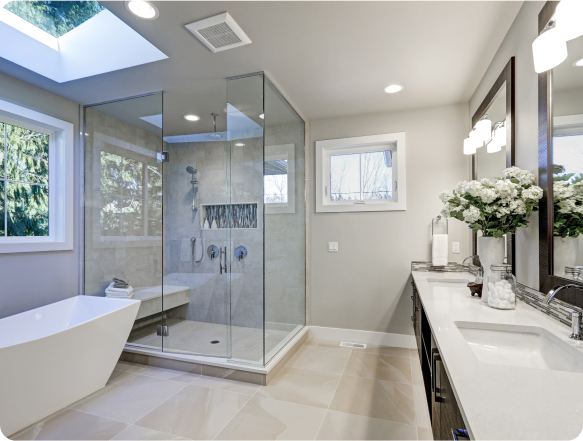
Type and Features
Walk-in showers come in two main types: prefabricated and custom. Prefabricated units, made from materials like acrylic, fiberglass, or cultured marble are more affordable options, often with standard sizes and features, but with some possibilities for upgrades. With a custom shower, you can create any shape you want, add features like performance plumbing, steam or decorative appearance for the walls and choose from a wider range of materials. Despite their higher cost, custom showers are the preferred choice among most homeowners as they provide significant aesthetic appeal and flexibility, enhancing the bathroom's design and functionality, often with a higher ROI.

Size
Walk-in showers come in various shapes and sizes. Like most projects, the larger your shower, the more it will cost. Choosing a standard-size shower can save on labor costs as it usually fits into your existing space without extensive renovations. The smallest recommended size is 36” x 36”, ensuring comfort and meeting the minimum standards for compliance with the Americans With Disabilities Act (ADA). Custom showers allow you to tailor the size to fit your bathroom and preferences. Due to the multitude of options available, predicting average costs is challenging, as it greatly depends on the specific features and requirements of the customization.

Labor
Labor is a large part of the cost of walk-in shower installation, with prices varying based on the shower's type, size and level of installation complexity. In general, prefabricated showers offer the lowest installation labor costs, requiring a basic plumbing setup. In contrast, custom showers demand more extensive labor, with costs calculated by square footage or hourly rates. Installing in new construction is less expensive because the walls are open, and you do not have to do any demo or remove existing objects. Integrating a new shower into an existing area or replacing an existing shower or bathtub often leads to increased expenses due to the need for demolition and additional changes.


